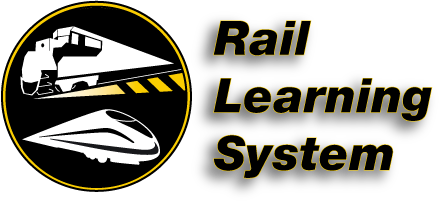Due to major system updates, anybody who created an account with the High Speed Rail Learning System before August 1st, 2017 will need to create a new account. Accounts created before August 1st are no longer available.
We are sorry for any inconvenience.
RCVW Technical Details: Topics
Welcome to the Rail Crossing Violation Warning (RCVW) Application Demonstration learning center. The content on these pages will help you learn about this project and its role in finding ways to reduce injuries and fatalities at highway-rail grade crossings. The project is sponsored by the Federal Railroad Administration (FRA) and implemented by Michigan Technological University's Rail Program and Battelle.
This is the RCVW Technical learning module. The RCVW Overview learning module provides background information to explain the needs and objectives of the RCVW demonstration project. Additional information is posted on the FRA Research, Development and Technology pages [RCVW content at FRA was not yet published as of 20 May 2024].
RCVW Project Scope and Intention
The RCVW project developed, tested, and demonstrated the RCVW application to showcase the potential safety benefits of connected vehicle technology for highway users navigating highway-rail intersections. The scope was limited to a demonstration of a prototype connected vehicle application through a small number of tests and is not intended to provide production-ready components or systems.
In the long run, the expectation is that the RCVW will be a step toward improving grade crossing safety by reducing the number of crashes, injuries and fatalities. It is also expected to facilitate further integration of driver assistance technologies between railway and vehicle stakeholders.
The outcomes of this project assist FRA in their goal toward zero fatalities at the highway-rail intersections and insight collected from the demonstration and related measurements/analysis provide critical information for future system implementation and integration.
Improving safety for all transportation modes will require interagency collaboration. The project provides a general demonstration of connected vehicle safety technologies and a model for the type of multi-agency cooperation with researchers and vendors that can develop transportation safety technologies.
Key Participants and Partners
The key participants for the development and demonstration of the RCVW project are the Federal Railroad Administration (FRA), the Federal Highway Administration (FHWA), the nonprofit science and technology company Battelle Memorial Institute, Michigan Technological University (Michigan Tech), and the commercial marketing company 2nd Sandbar Productions. Additional organizations that would be required for further development and potential production of an operational system would include automobile manufacturers and suppliers, railroad operators and railroad technology developers, state governments and transportation departments, telecommunications industry operators and developers, and additional federal agencies.
Learning Objectives for RCVW Project Overview
Explore additional information about RCVW by following the links below or selecting the tabs at the top of this or any other of the tabbed pages. You can also advance through to the next or previous page by following the links at the bottom left and right of each page.
